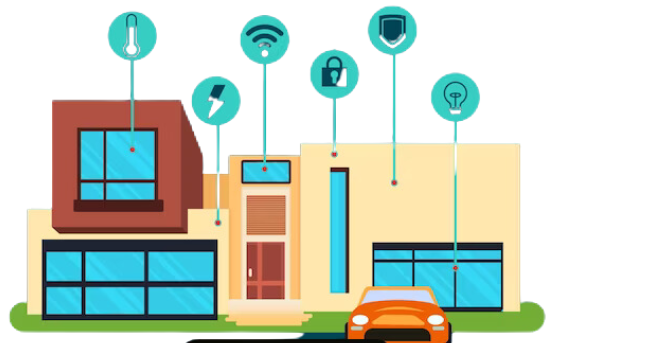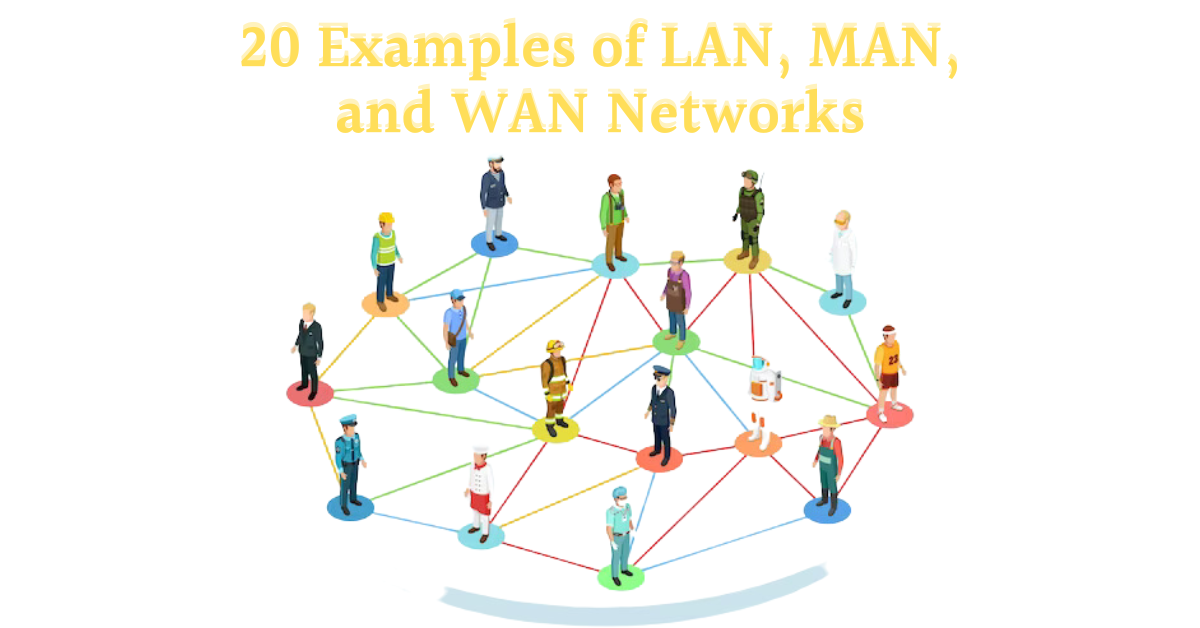In the kingdom of computer networking, there are three primary types of networks: Local Area Networks (LAN), Metropolitan Area Networks (MAN), and Wide Area Networks (WAN). Each of these networks serves a specific purpose and is used in different types of environments.
- Local Area Networks (LAN): These are private networks confined to a small geographic area, such as a home, office, or a group of buildings. LANs are typically used to connect personal computers and workstations in close proximity to each other, allowing users to share resources such as printers, games, or files.
- Metropolitan Area Networks (MAN): These are larger than LANs but smaller than WANs – MANs cover an area of between 5 to 50 km in diameter. Examples include city-wide networks or networks covering a large campus. MANs are typically owned and operated by a single entity such as a government body or large corporation.
- Wide Area Networks (WAN): These are expansive networks that cover large geographical areas, often encompassing a region, a country, or even the entire world. The internet is the most prominent example, connecting computers globally.
In the following sections, we will delve into 20 specific examples of these networks, exploring their unique characteristics and uses. Stay tuned!
Examples of LAN
A Local Area Network (LAN) is a network that covers a small geographic area, such as a home, office building, or school campus. LANs are typically owned, controlled, and managed by a single entity. They offer high data transfer rates and low latency, making them ideal for local data sharing and resource access.

| Example | Description |
|---|---|
| Home Network | A LAN is used in cybercafes to provide internet access to customers’ devices. |
| Office LAN | A network established within an office environment to facilitate communication and file sharing among employees. |
| School Campus Network | A LAN used in cybercafes to provide internet access to customers’ devices. |
| Cyber Cafe Network | A LAN is used in cybercafes to provide internet access to customers’ devices. |
| Retail Store Network | LANs used in retail outlets to connect POS systems and inventory management systems. |
examples of MAN
A Metropolitan Area Network (MAN) is a network that covers a larger geographic area, such as a city or a town. MANs interconnect multiple LANs and provide high-speed data transfer over longer distances.

| Example | Description |
|---|---|
| City-wide Network | A MAN deployed across a city to offer internet connectivity and services to residents and businesses. |
| University Campus Network | MAN infrastructure connecting various departments and facilities within a university campus. |
| Cable TV Network | Some cable TV providers use a MAN to deliver television and internet services to subscribers. |
| Public Wi-Fi Zones | A MAN offering wireless internet access in public places like parks and squares. |
| Government Office Network | A MAN used to interconnect government offices within a city for efficient communication. |
examples of wAN
A Wide Area Network (WAN) is a network that spans large geographical areas, often connecting multiple cities, countries, or continents. WANs are used for long-distance data transmission and are typically operated by telecommunication companies or internet service providers (ISPs).

| Example | Description |
|---|---|
| Internet | The largest WAN, connecting billions of devices worldwide and providing access to the World Wide Web. |
| Global Corporate Network | WAN used by multinational companies to connect their offices and data centers globally. |
| Cellular Networks | WAN is used by multinational companies to connect their offices and data centers globally. |
| Satellite Communication Network | WAN infrastructure enables mobile communication and internet access on smartphones. |
| Financial Networks | WAN utilizes satellites to transmit data across remote areas and oceans. |
Differentiate between LAN, MAN, WAN
A few differences between LAN,WAN, and MAN are deeply explained in given below;
| Aspect | LAN | MAN | WAN |
|---|---|---|---|
| Geographical Coverage | Small, e.g., a single building | Larger, e.g., a city or metropolitan area | Very large, e.g., worldwide |
| Ownership | Privately owned | Variable depends on the connection | Typically owned by telecommunication companies or ISPs |
| Speed | High | High | Expensive, due to the infrastructure required |
| Cost | Moderate to low | Moderate | Expensive, due to infrastructure required |
| Number of Devices | Hundreds to thousands | Thousands to tens of thousands | Millions or more |
| Data Transfer Distance | Short | Medium | Long |
| Latency | Low | Medium | High |
| Reliability | High | Medium | Medium to high |
| High cost, justified for long-distance communication | Home network, office network | University campus network, corporate network | Internet, global company networks |
| Technology Used | Ethernet, Wi-Fi, Bluetooth | Ethernet, SONET, ATM | MPLS, Frame Relay, Internet protocols |
| Backup and Redundancy | Relatively easy to implement | Requires more complex setups | Crucial due to long distances involved |
| Data Security | Easier to secure | Moderately secure | Challenging due to broader access |
| Maintenance | Easy | Requires more effort | Requires specialized teams and tools |
| Scalability | Limited | Moderate | Highly scalable |
| Typical Applications | File sharing, gaming | Connecting multiple buildings or campuses | Facilitating communication on a global scale |
| Examples in Real Life | Home networks, small offices | ISPs, city-wide networks | Internet, international companies |
| Protocols Used | TCP/IP, UDP, HTTP | Ethernet, MPLS | TCP/IP, BGP, OSPF, ICMP |
| Physical Components | Switches, routers, cables | Routers, fiber optic cables | Routers, satellites, undersea cables |
| Cost-Effectiveness | Cost-efficient for small areas | Balanced cost-to-performance ratio | High-cost, justified for long-distance communication |
| Network Management | Relatively easy to manage | Requires skilled network administrators | Complex network management |
Understanding the different types of networks LAN, MAN, and WAN and their applications can greatly enhance your knowledge in the field of computer networking. Whether you’re a student, a professional, or simply a tech enthusiast, diving deeper into LAN, MAN, and WAN networks can open up a world of possibilities.

